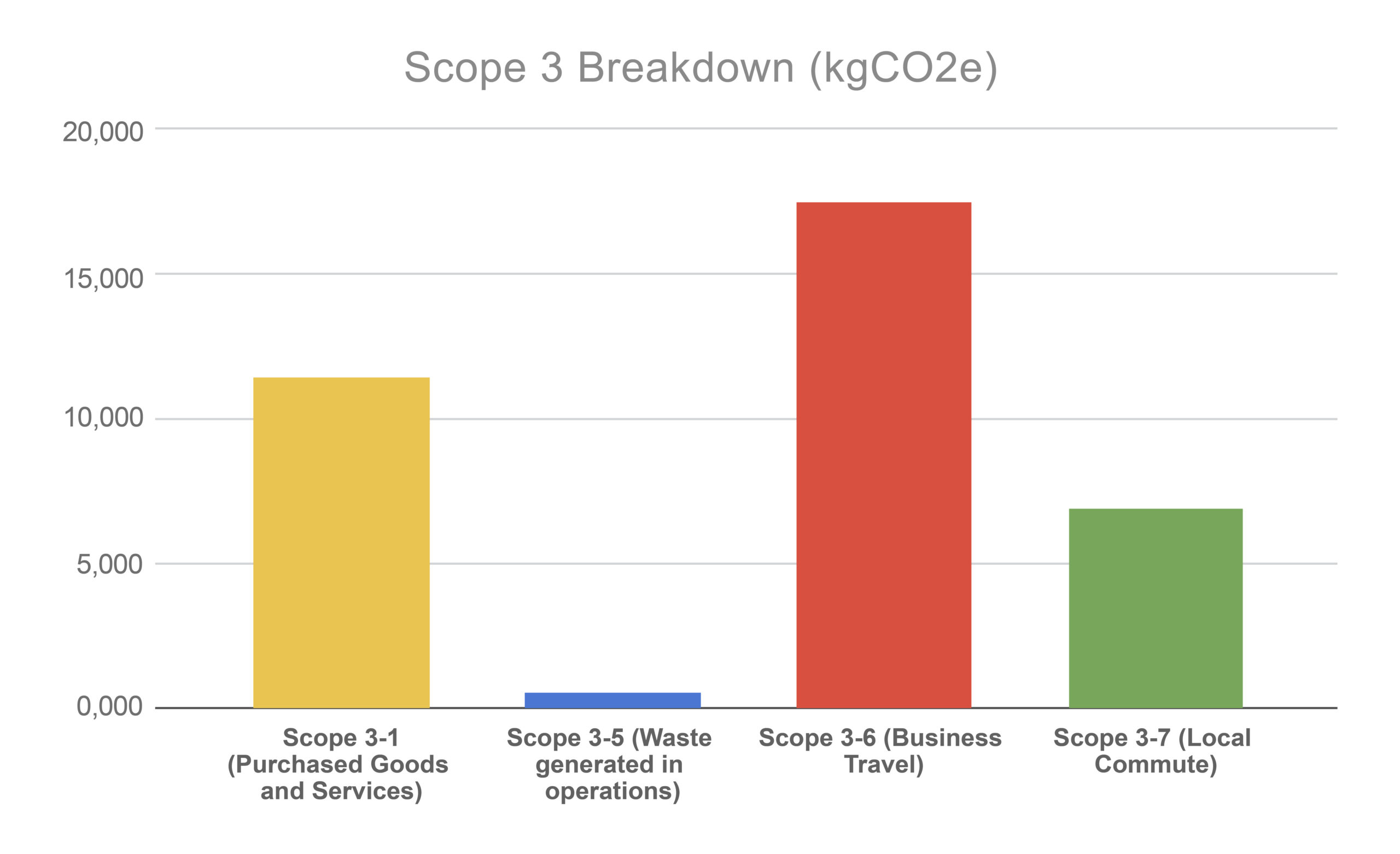
Air travel
Air travel accounted for 11% of our emissions this year, representing a notable increase from previous years. 72.3% can be attributed to the Youth Forum, as mentioned above.
The remaining 27.7% of air travel came from staff business trips. This was 292% higher, partly contributed by one trip to Indonesia that was via a private jet rather than a commercial flight.










